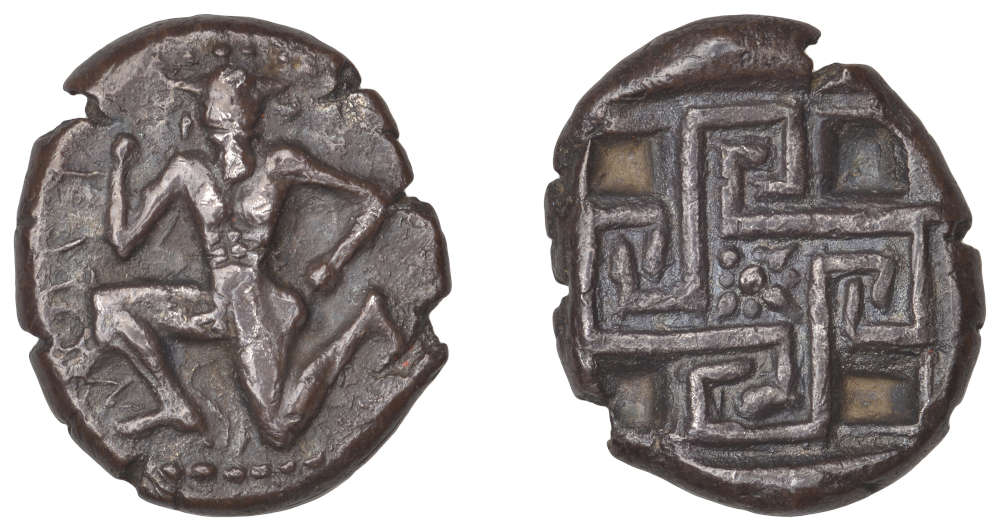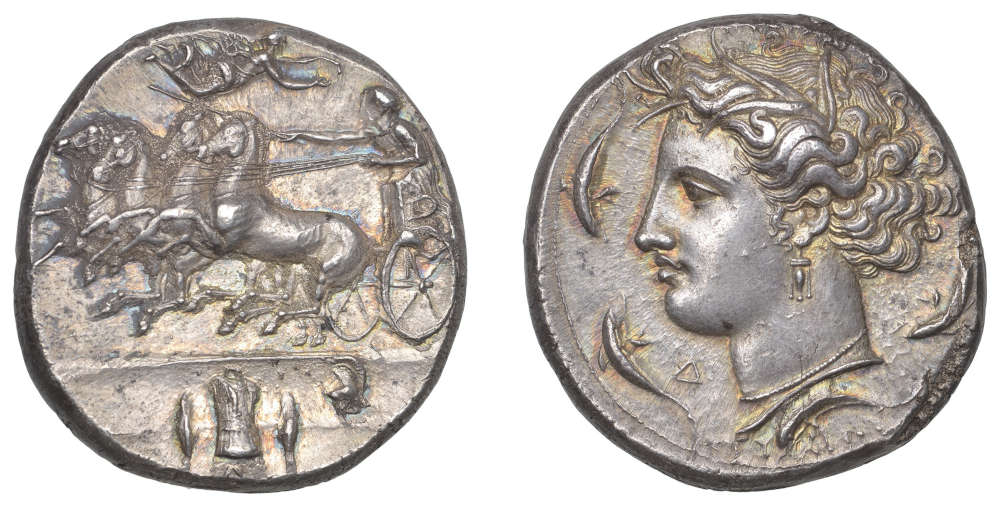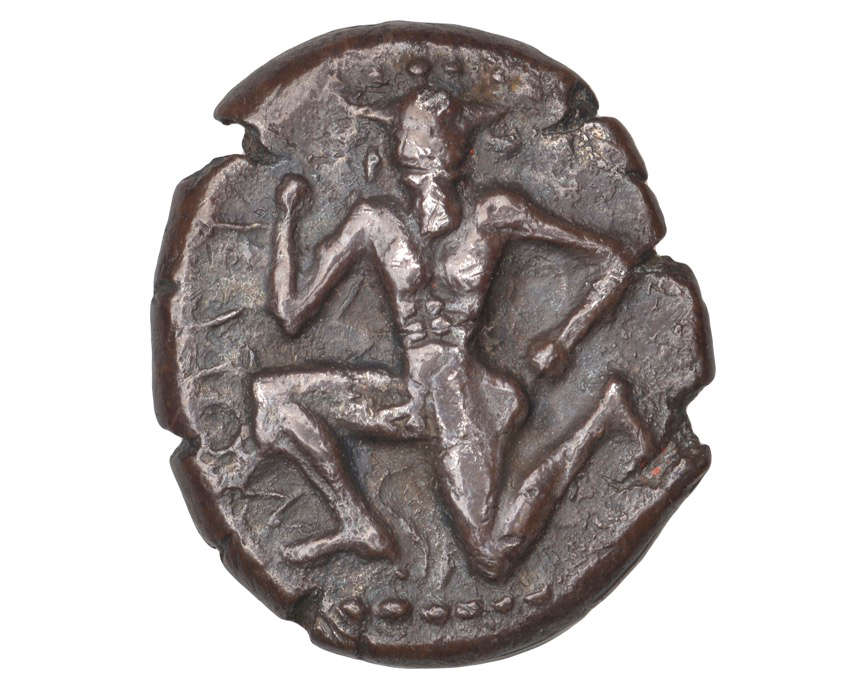Collection Sold to Benefit the Ashmolean Fetches £3,140,000
Noonans Mayfair
Auction 306
Coins
25 September 2024
GB-London
A phenomenal collection of 254 gold and silver coins that spanned many geographical areas of the Greek World sold for a hammer price of £3,140,000 at Noonans Mayfair on Wednesday, September 25, 2024. The sale was 100% sold.
The collection had been formed over a period of some 90 years by a father and son, however it was the family’s request that their anonymity be retained.
Prior to the sale, the collection had been estimated to fetch £1million and was being sold to benefit the Heberden Coin Room in the Ashmolean Museum, Oxford University’s Museum of Art and Archaeology which houses approximately 50,000 Greek and Roman Provincial coins and is the leading Coin Room in the world.

Lot 214: Crete, Knossos: Stater, struck c. 425-400. Good very fine, well centred and dark toned; with an especially evocative pedigree, being owned by the archaeologist who discovered the labyrinth-palace at Knossos. Estimate: £40,000-£50,000. Hammer price: £300,000.
The highest price of the sale was paid for a stater from Crete that was struck between c425- 400 which fetched a hammer price of £300,000. Showing the head of a Minatour, the coin was once part of the Sir Arthur J. Evans Collection – the archaeologist who discovered the palace at Knossos – and was exhibited as part of the Burlington Fine Arts Club’s Exhibition of Ancient Greek Art in 1903. It was estimated at £40,000-£50,000 and was bought by a private collector over the telephone.

Lot 96: Syracuse: Dekadrachm, struck under the tyrant Dionysios I, c. 390-380; signed work of Euainetos. Good extremely fine, perfectly centred with lustrous iridescent patination; specks of die rust and a trifling mark to the obverse. Estimate: £40,000-£50,000. Hammer price: £150,000.
A Sicilian decadrachm that was struck at Syracuse under the tyrant Dionysios I, c. 400-380 depicting a galloping charioteer sold for a hammer price of £150,000 against an estimate of £40,000-50,000 and was bought by a private collector.
![Lot 117: Sicily: Dekadrachm [Five Shekels], struck ‘in the land’, c. 264-60, during the First Punic War. Extremely fine, perfectly centred and of superb style; beautiful grey tone with traces of red-green patination. Estimate £20,000-£26,000. Hammer price: £120,000. Lot 117: Sicily: Dekadrachm [Five Shekels], struck ‘in the land’, c. 264-60, during the First Punic War. Extremely fine, perfectly centred and of superb style; beautiful grey tone with traces of red-green patination. Estimate £20,000-£26,000. Hammer price: £120,000.](https://neu.muenzenwoche.de/wp-content/uploads/2024/10/2024KW41NB01_03.jpg)
Lot 117: Sicily: Dekadrachm [Five Shekels], struck ‘in the land’, c. 264-60, during the First Punic War. Extremely fine, perfectly centred and of superb style; beautiful grey tone with traces of red-green patination. Estimate £20,000-£26,000. Hammer price: £120,000.
Elsewhere, a magnificent Dekadrachm of Carthage which was given from father to son on Christmas Day in 1963 sold for a hammer price of £120,000 against an estimate of £20,000- 26,000. It was bought by a private collector [lot 117].
Following the sale Bradley Hopper, Coin Specialist at Noonans commented: “We are delighted with the result of the sale, and it was a privilege to take the auction. The prices achieved today – many of which were more than 10 times their pre-sale estimate – reflected the importance of this collection.”
Prior to the sale, Dr Alexander Sturgis, Director, Ashmolean Museum of Art and Archaeology commented: “The money generated from the sale will endow the post of the curator of Greek coins at the Heberden Coin Room. This will ensure the long-term future of Greek numismatics at the University of Oxford, where the subject has a long and illustrious tradition.”








